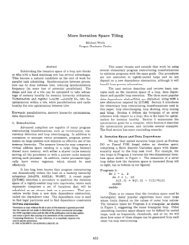Agroindustrial project analysi
Agroindustrial project analysi
Agroindustrial project analysi
- No tags were found...
You also want an ePaper? Increase the reach of your titles
YUMPU automatically turns print PDFs into web optimized ePapers that Google loves.
AN OVERVIEW 25an interactive process whereby the effect of one decision can betraced through the whole system to reveal consequences that, attimes, necessitate modifying the original <strong>project</strong> design.Each chapter identifies problem areas common to agroindustrial<strong>project</strong>s. To guide the analyst in performing <strong>project</strong> <strong>analysi</strong>s, centralissues are reduced to question form within each chapter, andthese lists are compiled in full in appendix B. The questions indicatethe information needed to thoroughly analyze each particularactivity. All the relevant data are seldom available to the analyst,however, and the cost of collecting data relative to the size of the<strong>project</strong> or capabilities of the personnel may not be justified. Thus,not all questions can or need be answered to carry out effective<strong>project</strong> <strong>analysi</strong>s. Project decisions are always made with imperfectinformation; nevertheless, it is crucial for the analyst to recognizewhat information is desirable so that data gaps can be recognizedand, if not remedied through new data collection, overcome byexplicit assumptions. It is better to know what questions have goneunanswered than never to have asked-risks can be better judgedthis way.The goal of this book is to provide agroindustrial <strong>project</strong> analystswith practical guidelines from actual experience and to distill theoreticalconcepts and translate them into a form useful to practitioners.Examples of actual agroindustrial <strong>project</strong>s have beenincluded but, given the diverse characteristics of each <strong>project</strong>, noanalytical framework can be detailed enough to encompass every<strong>project</strong>. Because a framework is ultimately only a guide, the analystmust adapt its analytical concepts to the specific <strong>project</strong>'s peculiarities.The critical judgment required of <strong>project</strong> analysts in usingthe framework for <strong>analysi</strong>s presented here is intended to heightentheir decision orientation when examining <strong>project</strong>s and thus tominimize the effort spent on the marginal aspects of <strong>project</strong>s. Manyof the examples given are from ongoing agroindustries rather thanproposed enterprises. It is useful for <strong>project</strong> analysts to be familiarwith problems that mature enterprises encounter so that they mayanticipate operational difficulties in a proposed <strong>project</strong>'s design.Because of its position in the food system, an agroindustry affectsthe nutritional status of a nation's population. Malnutrition hascaused massive human suffering and the severe erosion of humancapital in many countries. Although a viable food-and-fiber systemis fundamental to dealing with the problem of malnutrition, <strong>project</strong>













![Problem 1: Loop Unrolling [18 points] In this problem, we will use the ...](https://img.yumpu.com/36629594/1/184x260/problem-1-loop-unrolling-18-points-in-this-problem-we-will-use-the-.jpg?quality=85)


